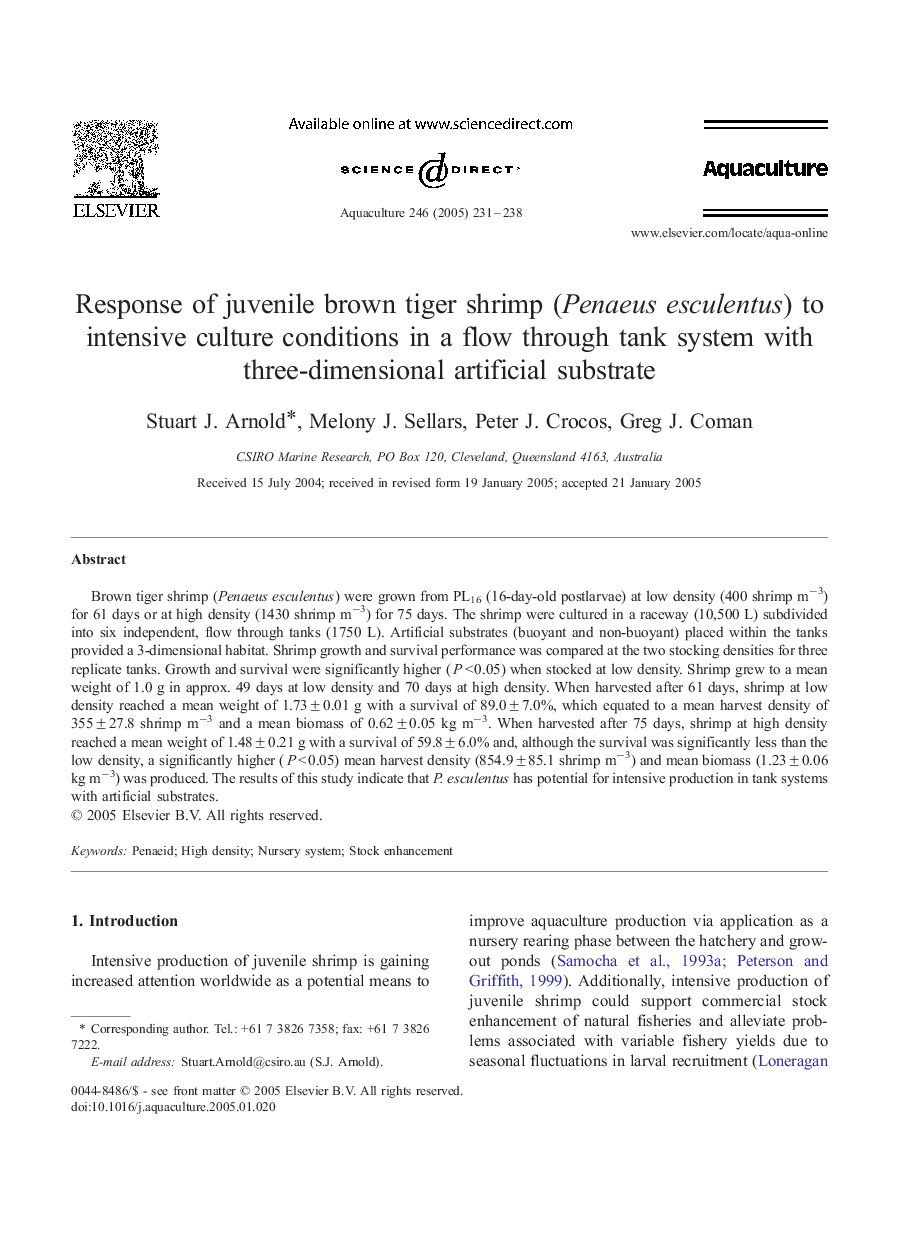| Article ID | Journal | Published Year | Pages | File Type |
|---|---|---|---|---|
| 8974742 | Aquaculture | 2005 | 8 Pages |
Abstract
Brown tiger shrimp (Penaeus esculentus) were grown from PL16 (16-day-old postlarvae) at low density (400 shrimp mâ3) for 61 days or at high density (1430 shrimp mâ3) for 75 days. The shrimp were cultured in a raceway (10,500 L) subdivided into six independent, flow through tanks (1750 L). Artificial substrates (buoyant and non-buoyant) placed within the tanks provided a 3-dimensional habitat. Shrimp growth and survival performance was compared at the two stocking densities for three replicate tanks. Growth and survival were significantly higher (P < 0.05) when stocked at low density. Shrimp grew to a mean weight of 1.0 g in approx. 49 days at low density and 70 days at high density. When harvested after 61 days, shrimp at low density reached a mean weight of 1.73 ± 0.01 g with a survival of 89.0 ± 7.0%, which equated to a mean harvest density of 355 ± 27.8 shrimp mâ3 and a mean biomass of 0.62 ± 0.05 kg mâ3. When harvested after 75 days, shrimp at high density reached a mean weight of 1.48 ± 0.21 g with a survival of 59.8 ± 6.0% and, although the survival was significantly less than the low density, a significantly higher (P < 0.05) mean harvest density (854.9 ± 85.1 shrimp mâ3) and mean biomass (1.23 ± 0.06 kg mâ3) was produced. The results of this study indicate that P. esculentus has potential for intensive production in tank systems with artificial substrates.
Keywords
Related Topics
Life Sciences
Agricultural and Biological Sciences
Aquatic Science
Authors
Stuart J. Arnold, Melony J. Sellars, Peter J. Crocos, Greg J. Coman,
